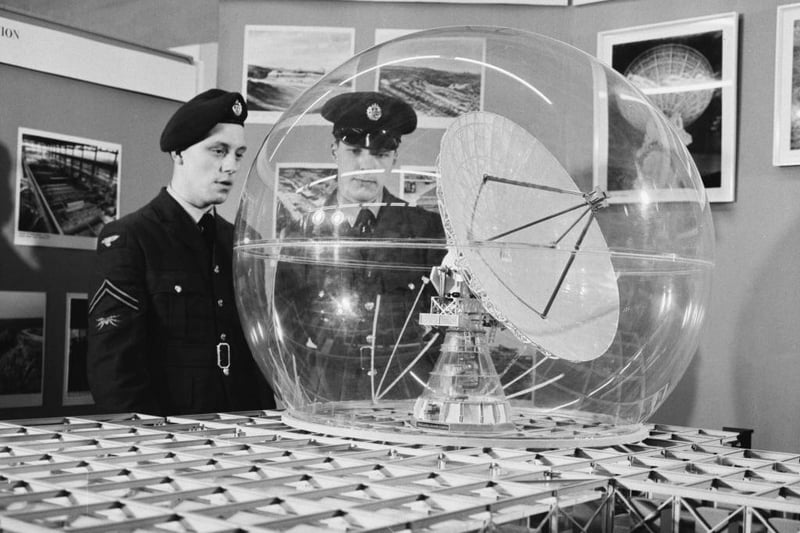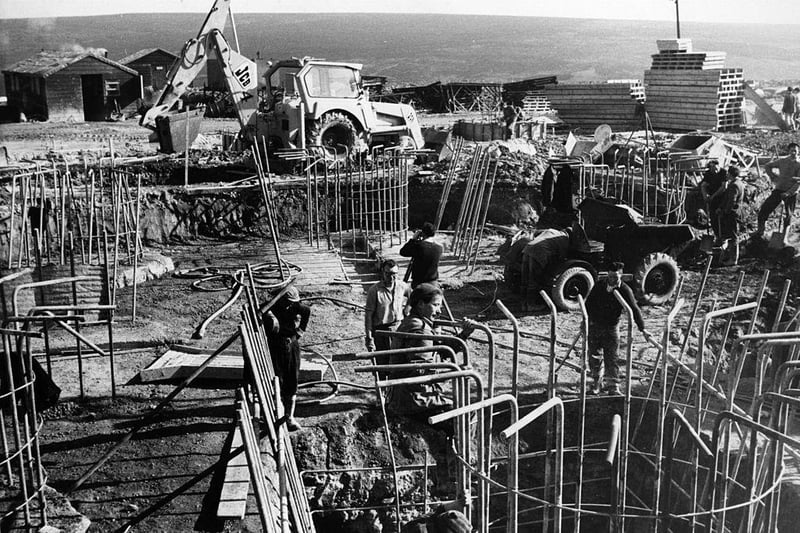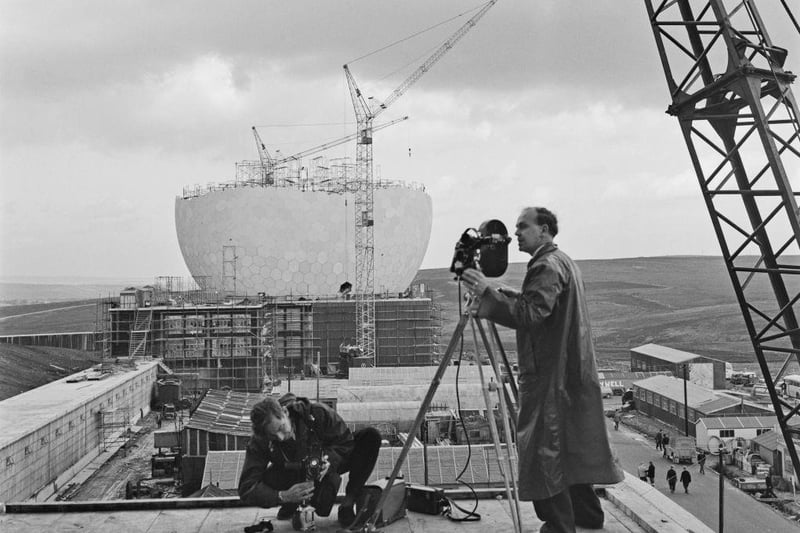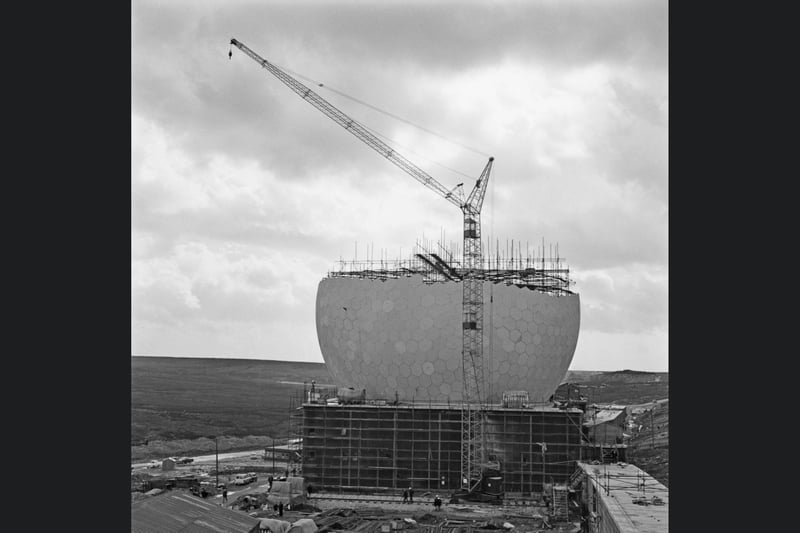RAF Fylingdales is a Royal Air Force station on Snod Hill in the North York Moors which operates as part of the UK’s Ballistic Missile Early Warning System (BMEWS).
Data collected by the station is shared with the United States, with the primary purpose to give warning of an impending ballistic missile attack.
Its secondary role is the detection and tracking of orbiting objects and it keeps track of spy satellites used by other countries.
The station was sited on a former wartime mortar range which had to be comprehensively cleared by RAF Bomb Disposal before construction could begin.
Building of the three 130-foot (40 m) diameter 'golfballs' or geodesic domes (radomes) which contained mechanically steered radar began in 1962, and the site became operational on September 17 1963.
The ‘golf balls’ were replaced by the current tetrahedron ('pyramid') structure in the early 1990s.

1. Model of the Ballistic Missile Early Warning System (BMEWS) on display
Unspecified military personnel inspect a model of the Ballistic Missile Early Warning System (BMEWS) on display at the Air Ministry exhibition in Whitehall, London, England, May 21 1962. Later that year, BMEWS was installed at RAF Fylingdales on the North York Moors. Photo: Evening Standard/Hulton Archive/Getty Images

2. Digging the foundations
14th March 1961: Steel for the concrete foundations of the radar dome building is being worked on. Photo: Central Press/Getty Images

3. Under construction
A geodesic dome (radome) under construction at RAF Fylingdales in North Yorkshire as part of the United States Air Force's Ballistic Missile Early Warning System (BMEWS), on October 4, 1962. Photo: Evening Standard/Hulton Archive/Getty Images

4. During construction
A geodesic dome (radome) under construction at RAF Fylingdales in North Yorkshire as part of the United States Air Force's Ballistic Missile Early Warning System (BMEWS), on October 4, 1962. Photo: Evening Standard/Hulton Archive/Getty Images

